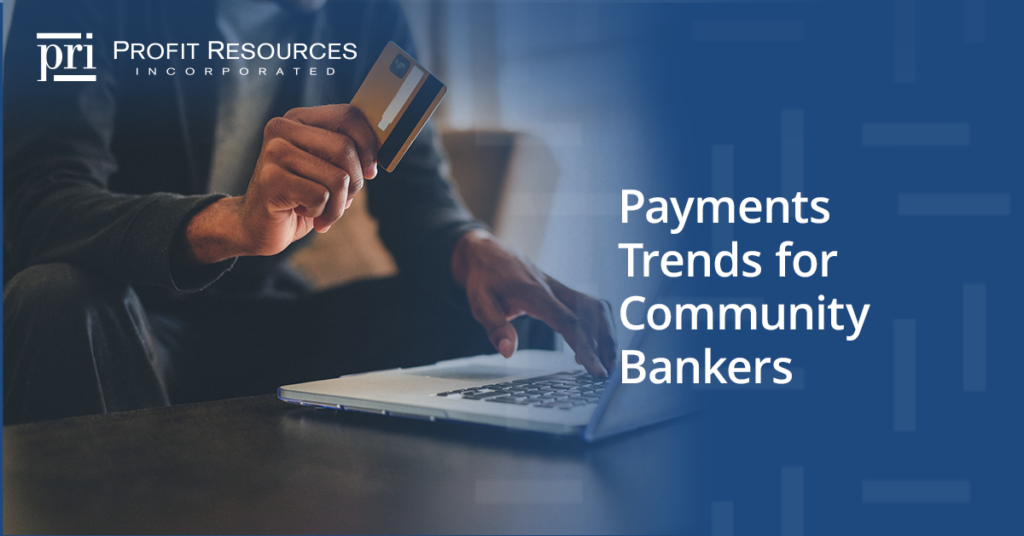
No aspect of the financial ecosystem is more dynamic than the payments space. FIs who choose to continue doing what they have always done without closely examining their needs and desired strategy will find themselves in a poor competitive position.
“While community bankers are necessarily dependent upon their vendor relationships to deliver services to their customers, understanding those vendors’ strategic payment directions and educating themselves on developments in the payments space are critical. Community banks must own and drive their own payments strategy,” said Tom McGill, Profit Resources Director of Customer Experience.
The $88 billion consolidations of the processor space in 2019 and the rise of Fintech providers addressing payments system deficiencies have created new topics for community banks to consider. The following topics deserve further consideration as FIs survey the evolving payments landscape.
- Real-Time Payments (or RTP). Whether through The Clearing House, FedNow, or consumer-based apps like PayPal, Venmo, and Zelle, Real-Time Payments are part of the payments ecosystem. The question for community banks is how do they want to play in the RTP space? Will they be passive only and allow transactions to happen to them or will they use RTP as a strategic component of their offerings?
- Buy Now, Pay Later. While topics like Real-Time Payments (RTP) garner a good bit of interest, a recent addition to the payments menu is Buy Now, Pay Later (BNPL). While some will say that BNPL is nothing more than an old-school layaway plan or a different manifestation of a credit card transaction, the fundamental change here is in who owns the transaction flow and thereby controls the revenue stream. Should your community bank be playing in the BNPL space? If so, who will you partner with? Is there an economic model here that makes sense for you?
- Digital Payment Vehicles. The importance of the physical card as a payment vehicle continues to erode as digital surrogates provide both replacements for the card and the provisioning process. Mobile Wallet technologies, predominantly delivered via smartphones, are certainly the most prominent of these options today. More will evolve over time.
- New Platforms. In the past five years, we’ve seen The Clearing House, FedNow (coming soon), PayPal, Venmo, Zelle, etc. enter the payments space and establish themselves quite quickly. In 2020, 54% of consumers used PayPal while 14% used Venmo and 13% used Zelle. What’s next? Will there be a new set of payment rails created and how will that new environment impact the customer experience and Community Banks’ revenue?
While it is tempting to turn one’s attention to the future and not focus on today’s opportunities, doing so would be a mistake. Community banks of all sizes have significant opportunities within their current payment systems, most particularly with debit cards. Optimizing your debit card program can lead to significant improvements in interchange income and help fund whatever future investments are necessary.
“It has never been more important for FIs to immerse themselves into the payments space,” McGill said. “Optimizing the current state and keeping an eye on the future cannot be considered an ‘either, or’ choice. Both deserve intense attention.”
Profit Resources specializes in identifying profitability improvement areas for financial institutions through revenue growth, cost control, streamlining processes, and effective use of technology. Contact us to learn more about our personalized approach to propel growth and improve profitability.
Other Recent Articles
- Community Banking Month: How Peoples Bank is Strengthening Their Community
- AI and Automation in Community Banking
- Keeping The Community Bank Feel as You Grow
- The Human Touch in Digital Banking: Balancing Automation and Personalization
- Future-Proofing Financial Institutions: Navigating Trends, Technology, and Strategic Innovation
- The Power of Curiosity in Process Improvement Strategy
